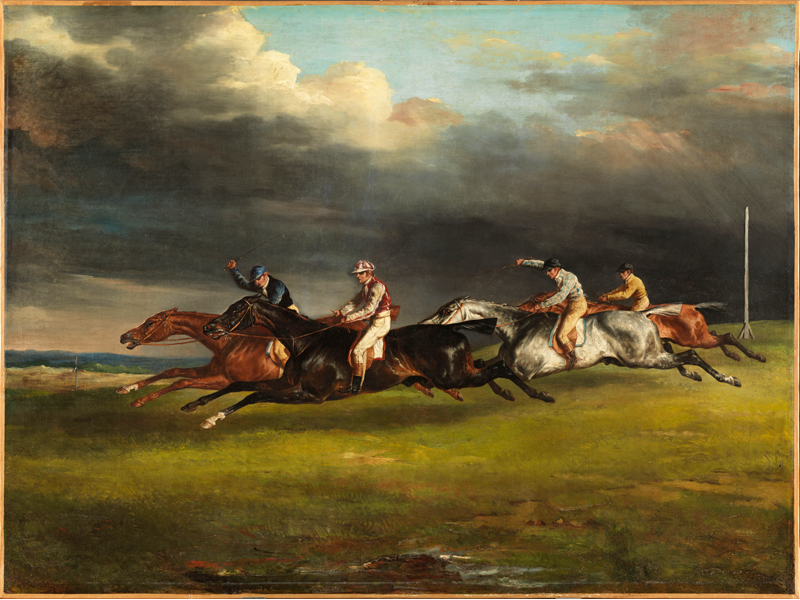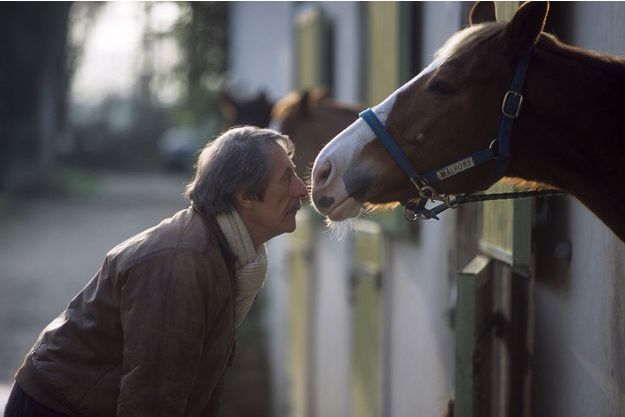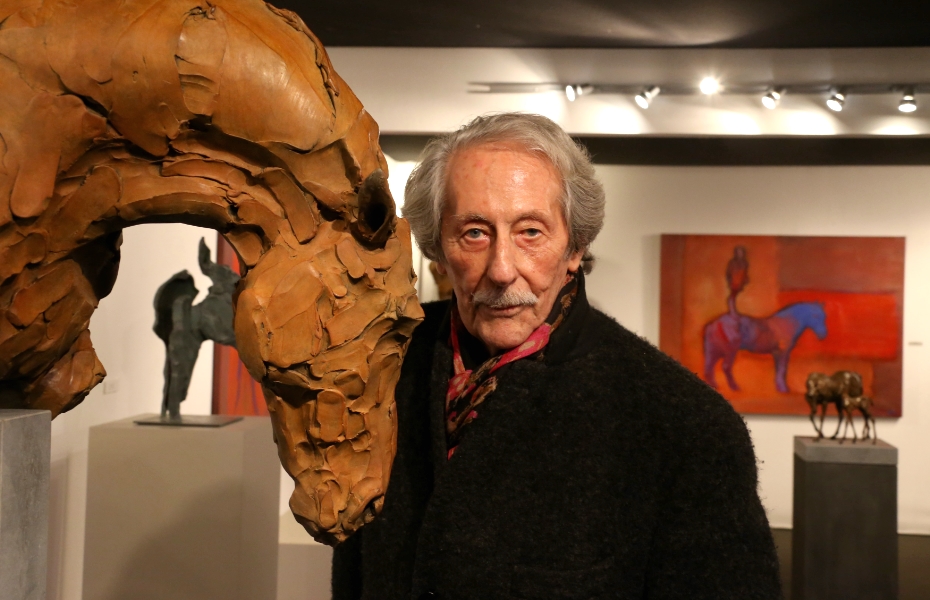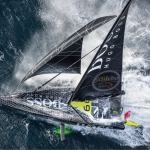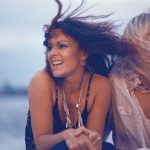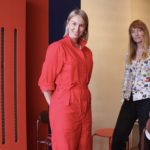The Derby by Gericault.
For the actor, Jean Rochefort, it was the horses who inspired him to write the bestselling book, Le Louvre à Chéval.
By Camilla Alfthan
”EQUESTRIAN ART is the result of two species that find confidence in one another. The painters were aways interested in the horses. Their aesthetic beauty, their sensuality and the mystery of the horse always inspired artists,” said Jean Rochefort during a chat between classes at the Gucci Masters show in Paris. When a friend from the Louvre asked him to co-write a book which examines the cultural link between horses and mankind the result was a visual tome peppered with comments and anecdotes.
”There are some very beautiful images and some humour, too. I received letters from children who discovered painters thanks to little bits of fun. In art it all becomes very serious. But it has to amuse you and create emotions so it can’t be serious. Art is made for happiness,” said Rochefort whose own favourite oeuvres were by Delacroix – “A master whose brush strokes are beyond comparison”.
“In art it all becomes very serious. But it has to amuse you and create emotions so it can’t be. Art is made for happiness!”
The actor, a regular at the French show jumping events, had come to Paris with his wife to watch their daughter compete on the family’s homebred horses.
”Here it is too much showbiz like Cannes. It’s very peculiar. I was a part of this competition from the beginning and I would prefer if it was more about the sport than about the people; if you understand what I mean. I call it restaurants with horse shows. When people eat and forget to look,” he said with a shrug while one of Paris’ little Green Men, un technicien de surface, began to clean our table with a cloth and spray.
Rochefort at his haras in Normandy.
The equestrian world is very special. How did you enter it? In Bretagne my grandfather had carriage horses to take the tourists sightseeing. His interest skipped a generation. So for me, it all began when I was riding in a film. It was like an electric charge! My life changed because of that! I have since bred horses and my daughter continues and my wife as well. It’s an enormous passion. All species interest me. Even homo sapiens. But less and less. I think we are lost. (Laughs.)
Animals are kinder? At least they have certain codes. A stallion fights with another stallion, the strongest one stays and the weaker leaves. But with us, humans, the weaker leaves and the stronger kills him anyway. He who wins kills. It’s only with the ants and the humans that this exists. The war between the same species only exists between ants and humans. And some chimpanzees. They are very close to us.
They recently discovered that two-three male chimpanzes will run great distances to other chimpanzee families just to kill a male and then leave again. And the reason behind this is not known. Many things are discovered these days, we begin to know the animals much better, non? In Le Monde they spoke about this the other day; the osmosis between mankind and other species, among them, the horses.
Which is the subject of your book; the relation between horses and humans. Voilà, in the old days, they worked for us, they obeyed us. Now we are trying to create a bond. It is this bond that you see in great performances. When I started sixty years ago horses did not have much fun. It was often violent work. With my grandfather you should not approach them as they were seen as dangerous monsters. That has changed a lot.
”In the old days, the horses worked for us. Now we’re trying to create a bond with them. It is this bond that you see in great performances.”
Equitation is an art form in more than one sense. Oui, equestrian art begins with the confidence between of two species that find confidence in one another. The horse is relaxed because he trusts the rider. In the art world, you see the approach between the artists and the animals, where the horses interested them the most. The aestetic beauty, their sensuality and the mystery of the horse always inspired artists. The book had a lot of succes all over the world, so I’m very happy and even very proud.
People easily forget that this art exists. Even 30.000 years ago man painted animals in grottos. It was magnifique. The bulls, the horses.. Without the animals there may never have been any painters. Because when the first drawings were made on walls, they painted their companions in life.
Do you collect equestrian art? Écoutez. I find that here, too, there’s been an evolution. Before, I found it very boring. Twenty years ago it wasn’t interesting at all. Now, when I see certain oeuvres they create an emotion.
The audience needs to be seduced.. Even in modern art when there’s wonderful absurdities and someone writes four philosophic pages to explain it that is not reasonable. We must have fun with art, it cannot be serious.
At a recent exhibition in Paris, I saw a video where a horse was skating on ice. I thought there was someting special and went to have a closer look. When I learned that the artist had made it because he’d had problems with his mother I was no longer interested. That there had to be a psychological reason for him to make the film made me lose all interest!
After that I saw three obstacles which were encircled by a long piece of rope so you couldn’t get too close to them. A drop of water fell on one of the obstacles every thirty seconds. I was fascinated and I saw something interesting there. After a while the guardian came up to me and said; ’Monsieur Rochefort, that is a leak…’ Funny, non?” ©
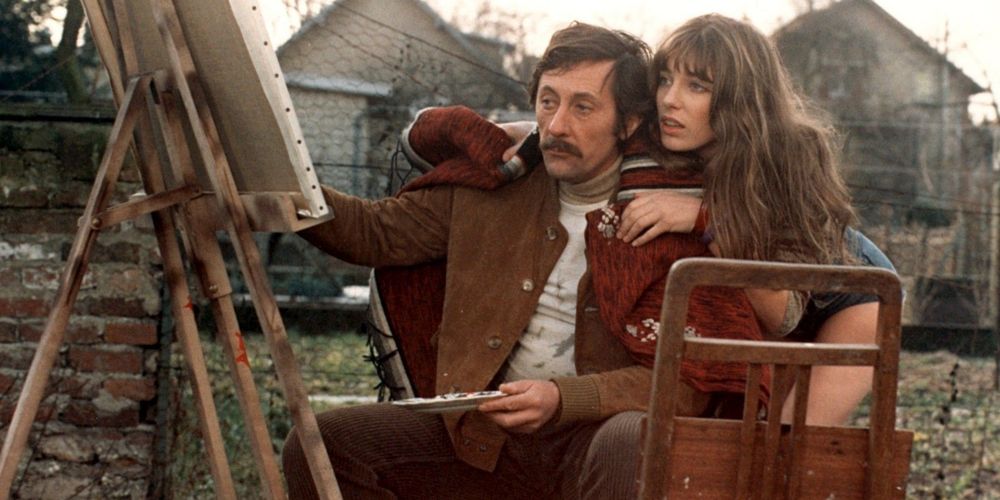 Jean Rochefort with Jane Birkin in the film ‘The Artist and his Model’.
Jean Rochefort with Jane Birkin in the film ‘The Artist and his Model’.
Le Louvre à Cheval by Jean Rochefort and Edward Vignot is published by Louvre Editions.
L’homme et le cheval, une relation millénaire
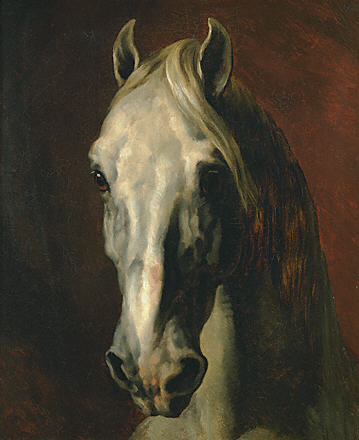
Delacroix’s portrait of a horse.
